Jewish Crypsis in American Buddhism
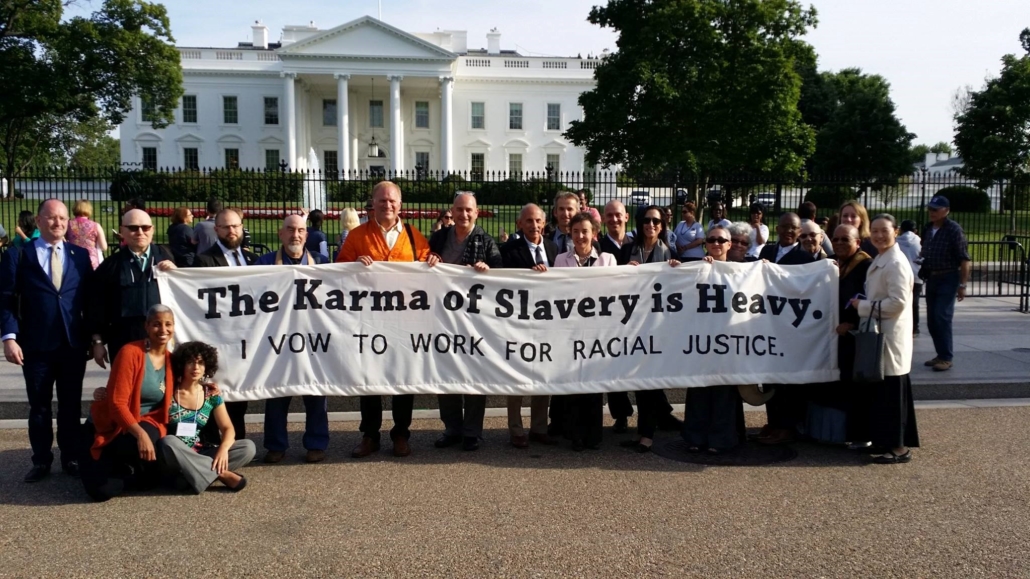
“From my conversations with many of these Buddhist leaders, they have spoken openly about how their commitments to social justice are shaped by their Jewish upbringings.”
Emily Sigalow, American JewBu: Jews, Buddhists, and Religious Change, 2019.As mentioned in a 2017 review of The Jesuit Order as a Synagogue of Jews (2010) by Boston College’s Robert Aleksander Maryks, I am especially fascinated by aspects of Jewish group behavior that involve crypsis, a phenomenon that is often facilitated by a combination of deception and self-deception on the part of Jews.
To date, the most forthright and convincing theoretical framework for understanding cryptic forms of Judaism is found in Kevin MacDonald’s groundbreaking Separation and Its Discontents: Toward and Evolutionary Theory of Anti-Semitism.
A substantial portion of the fourth chapter of the text (1998/2004: 121–132) is devoted to ‘Reactive Racism in the Period of the Iberian Inquisitions.’
Here MacDonald puts forth the view that the blood purity struggles of the Spanish Inquisition during the 15th and 16th centuries should be seen as “an authoritarian, collectivist, and exclusionary movement that resulted from resource and reproductive competition with Jews, and particularly crypto-Jews posing as Christians.”
The historical context lies predominantly in the forced conversion of Jews in Spain in 1391, after which these ‘New Christians’ or conversos assumed (or indeed retained) a dominance in the areas of law, finance, diplomacy, public administration, and a wide range of economic activities.
MacDonald argues that despite superficial religious conversions, the New Christians “must be considered a historical Jewish group” that acted in such a way as to continue the advance of its ethnic interests.
An integral aspect of this was that Wealthy New Christians purchased and endowed ecclesiastical benefices for their children, with the result that many prelates were of Jewish descent.” Much of MacDonald’s theoretical framework is borne out in Maryks’s text, which convincingly demonstrates that ethnically Jewish involvement in the early Society of Jesus followed the same pattern of ethnic nepotism and religious insincerity.
Jewish crypsis in Christianity never really ceased, and the story of Jewish involvement in Vatican II, and even the contemporary activities of even minor figures like Jewish Church of England minister Giles Fraser, has deservedly been the source of much discussion in our circles.
For the last couple of years, however, I’ve been intrigued by the idea that multiculturalism would present Jews with a proliferation of identities through which the cryptic pursuit of Jewish interests could be pursued, and non-Christian religious identities, other than Judaism itself, are no exception.
Then, beginning with my chance discovery of a series of “anti-racist” “Whiteness seminars” offered by a series of American Buddhist organizations, and especially my investigation of the background of Buddhists for Racial Justice (BRJ), I began to unravel precisely what I had previously only theorized — a massive Jewish presence in a non-Christian religion which had been adapted to serve Jewish interests via crypsis.
My investigations would providentially coincide with the November 2019 publication, by Princeton University Press, of Emily Sigalow’s American JewBu: Jews, Buddhists, and Religious Change. The remarkable findings of Sigalow’s text, together with some of my own observations, are presented in the following essay.
The Jew in the Lotus
If I told you I’d been reading the teachings of Ram Dass, Puma Chodron, Krishna Das, Bhikkhu Bodhi, Surya Das, Zen Master Bon Seong, Thubten Chodron, and Zen Master Wu Kwang, it would probably bring to mind images of bald Tibetans, bearded Hindus, and inscrutable East Asians.
Your mind would drift to exotic destinations, and dimly lit temples, far from the hustle and bustle of the American city.
Such is the magic of names, and changing one’s name really can be a form of intellectual and social sleight of hand.
Just ask the real individuals behind these names — Richard Alpert, Deirdre Blomfield-Brown, Jeffrey Kagel, Jeffrey Block, Jeffrey Miller, Jeff Kitzes, Cheryl Greene, and Richard Shrobe — urban leftist Jews who reinvented themselves as the founders and leading sages of American Buddhism.
These figures are just part of a story that began when, in Chicago in 1893, Charles T. Strauss, a Jewish hat maker, became the first non-Asian person in the United States to convert to Buddhism. Today, it is conservatively estimated that around 30 percent of non-Asian Buddhists in America are ethnically Jewish, and many of these are in leadership positions over the remaining 70%, composed mainly of Americans of European descent.[1]
Despite a small number of early converts like Strauss, the Jewish movement into Buddhism took on significance for the first time in the late 1950s, when it gained popularity in countercultural leftism.
The influx began some time around the advent of the Beats, where one of the pioneering figures was the (non-Jewish) poet Gary Snyder. Snyder, whose later writings on nature I greatly admire, had worked a series of jobs in forestry and had a deep passion for ecology and the environment, factors that drew him to some of the Far East’s traditional attitudes toward nature, especially those of Zen Buddhism. It was Snyder who introduced Zen Buddhism to Jack Kerouac (who would later immortalize the encounter in his 1958 novel The Dharma Bums) and to Allen Ginsberg. Snyder’s Zen Buddhism was spartan, intellectual, and accompanied by a conviction that man needed to return to nature, facets that Kerouac and Ginsberg found intolerable. Both Kerouac and Ginsberg, however, spun off in different directions, finding forms of Buddhism they found more amenable to their personality types.
For the degenerate homosexual Ginsberg, he found what he was looking for in Chögyam Trungpa, an alcoholic and sexually licentious Tibetan monk whose doctrine of “Crazy Wisdom” promoted “flamboyant disregard for conventional behavior.” This style of Buddhism, later laced with LSD culture, would later proliferate in the leftist counterculture.
By the 1960s, strands of Buddhism perceived as permissive, or at least morally non-judgmental, were becoming increasingly popular on the countercultural Left, where the disruption of conventional behavior was the established modus operandi.
Jews, disproportionately represented in this area of socio-political life, began to drift to Buddhism in significant numbers. The reasons for this drift have been debated in scholarship and media for decades (e.g. see here, here, and here).
The most prominent of suggested reasons is that these Jewish converts are dissatisfied or unfulfilled with the spiritual aspects of Judaism but are resolutely hostile towards, or suspicious of, Christianity, which is seen by many Jews as the fons et origo of anti-Semitism. Sigalow, for example, quotes one young female American “JewBu” as saying, “Christianity in particular just gives me the heebie-jeebies.”[2] Another, in his late 60s, told Sigalow:
It’s hard for me to sit in a Buddhist meditation group in a Unitarian Universalist church. … Even though I appreciate it, and its philosophy is that all religions are fundamentally at some level the same, the word ‘church’ has been contaminated for me [from my Jewish upbringing].[3]There’s a grain of truth in such interpretations. As will be demonstrated below, many of these Jews clearly, on some level, find the religious forms of Judaism insufficient, even if they obviously prize their Jewishness in other ways. There’s also a lot of truth in the idea that Jews are likely to be extremely averse to conversion to Christianity, a stance derived primarily from very anti-Christian self-understandings in Judaism which posit Christianity as pathological and negatively obsessed with Jews.
It really goes without saying that whereas all religions look negatively on apostasy, Jewish to Christian conversion ranks as especially noxious among Jews, with simple atheism likely to be held in much higher regard within the group. But these are really only “push” factors that don’t really explore the pull of Buddhism.
Here I posit the lack of doctrine and dogma in certain strands of Buddhism, and a lack of pressure to express certain beliefs, a fact which has enabled Jews to superficially adopt an entirely new religious and cultural identity without compromising ethnic relationships or even some of the fundamental principles of Judaism.
Allen Ginsberg, for example, was not the last individual to describe himself as “both a Jew and a Buddhist.”[4]
Crucially, Buddhism in 1950s and 1960s America was something very new; it could be steered, shaped, and directed in its infancy. Jews thus had a chance to fashion a new religion in their image. Indeed, one of the most remarkable aspects of Sigalow’s work is not just that it demonstrates how little Jews adapted to Buddhism, but how much they adapted it to their own identity.
Jewish Buddhist Activism
Sigalow remarks that not only have Jews “emerged as prominent teachers and leaders,”[5] in Zen, Insight Meditation, and Tibetan Buddhism, but that they have uniquely imbued American Buddhism with an “activist ethic”[6] that it has lacked elsewhere and at any time previous.
Writing in The Tablet, Michelle Goldberg concedes that American Buddhism is a essentially Jewish creation that is “unlike anything seen in traditional Buddhism.”
It’s interesting that non-Jewish contemporary Buddhists have noted, and argued against, a strong tendency towards “social justice” in American Buddhism.Brad Warner, a White Buddhist who trained in a Zen monastery in Japan, has observed in a number of blogs and YouTube videos (e.g. see here, here, and here) that whereas traditional Buddhism has insisted that there is no hierarchy in suffering (all people suffer, all races suffer, and none more so than others), modern American Buddhism is obsessed with liberal-left politics, social justice activism, and a negative preoccupation with White demography.
Warner has also pointed out that while Buddhism encourages a focus on the present, and a letting go of the past, modern American Buddhism is bogged down in discussions of putative historical racial injustices that include trips to Auschwitz posturing as Zen meditation retreats to reflect on how we “should seek and welcome diversity.” Predictably, Warner has since been accused of being a Trump supporter (which he most definitely is not) and a neo-Nazi (which he most definitely is not).
The reason for the discrepancy between Warner’s Buddhism and that of most American Buddhists is that Warner was trained by spartan Japanese Buddhists and not, as is the case for most American Buddhists, by Jewish intellectual activists.
Sigalow writes that many of the ethnically Jewish leaders and teachers of American Buddhism possessed “deep relationships with Judaism” and “brought ideas and concepts drawn from Judaism into Buddhism.”[7]
Jews have been able to direct American Buddhism because they accumulated rapidly in its ranks during its first popularization in the late 1950s and early 1960s, and Jewish ethnic cliques were subsequently behind the foundation of most of the organizational structure of American Buddhism thereafter.
Founded in 1975, the Insight Meditation Society, supposedly rooted in the Theravada tradition of Buddhism, is one of the largest independent centers for the study of Buddhism in America. Its founders were Jack Kornfield, Sharon Salzberg, and Joseph Goldstein. Shambhala Publications, the foremost publishing house for American Buddhism, was founded by Samuel Bercholz.
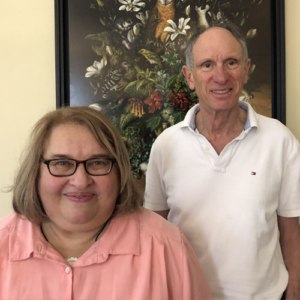
“Buddhist” Gurus: Sharon Salzberg and Joseph Goldstein
Another highly influential group, the Zen Community of New York, now known as Zen Peacemakers, was established in 1980 by Bernard Glassman. Glassman’s group is the most prominent proponent of Auschwitz tours for American Buddhists, and his website description of these ventures is quite something:
We’ll once again feel the razor wire fences of imprisonment, gather in barracks that once squeezed humans tighter than cattle, and pray by those deep rectangles in the ground that killed people because they were different on account of religion, country, ethnicity, and sexual preference. Or just because. Because we continue to have scapegoats, someone to blame, rather than accept the complex responsibility of living fully as human beings. … In Poland it is illegal to talk of Polish complicity in the murder of Jews in Poland. Democracy and diversity have become dirty words. Sectarianism and bigotry have reared their ugly heads, stoking fear of immigrants, refugees, poor families, and ethnic and religious minorities. … Today we witness the intersectionality of discrimination — individuals and groups are marginalized for being of a certain color, and of certain sexual orientation, and of certain class, and of certain religion, in complex and overlapping ways … What does diversity mean to you? Are we all in this together, or are a privileged few inside and everyone else out? Who is included, and who is excluded? Now more than ever it is crucial to bear witness to the results of xenophobia and bigotry. The 2020 retreat at Auschwitz-Birkenau will not only bear witness to the killing and torture of Jews, Gypsies, Gays, and Polish intellectuals and journalists, to a time when a non-Aryan life was deemed a worthless life. … We seek and welcome this diversity especially now, … How do we build bridges and alliances instead of walls?If this description strikes you as utterly devoid of Buddhist content—stripped bare of even the slightest relationship to the austere, reflective Zen of the Far East and something that could have been written by an ADL operative, you aren’t alone.
But this is, after all, the new “American Buddhism,” and it has an overwhelmingly Hebrew flavor.
After all, California’s Spirit Rock Meditation Center was also founded by Jack Kornfield, with the assistance of fellow “Buddhist” Sylvia Boorstein.
Today its key teaching staff include leading American “Buddhists” like Howard Cohn, Will Kabat-Zinn, Wes Nisker, and Donald Rothberg.
Most, if not all, of the country’s largest Zen Buddhist and meditation centers, including Empty Gate Zen Center (Jeff Kitzes), the Nashville Mindfulness Center (Skip Ewing), Chogye International Zen Center (Richard Shrobe), and San Francisco Zen Center (David Zimmerman), are directed by Jews, while Jews continue to dominate most mass-appeal aspects of modern American Buddhism, especially its literary scene.
All of this is a mere reflection of the Jewish takeover of early American Buddhism in the 1960s, a massive presence that prompted Chogyam Trungpa, Ginsberg’s guru, to remark in astonishment at the number of Jews among his students that they would start the “oy vey school of Buddhism.”
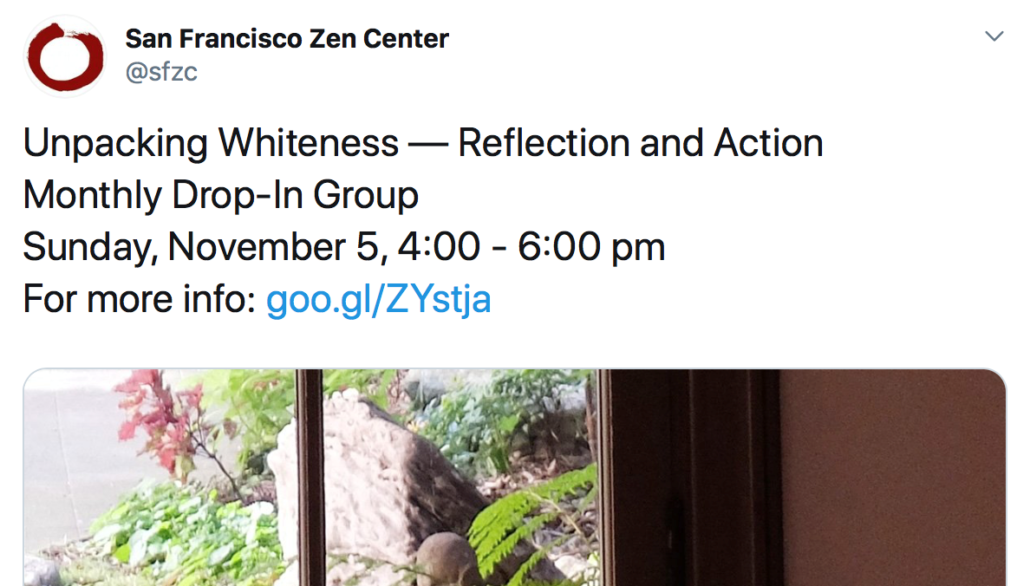
Analyzing the “JewBu” phenomenon from the perspective of crypsis, it is extremely interesting that there is a high level of ethnic cohesion and cooperation among Jewish converts to Buddhism.
The vast majority of these individuals worked alongside each other to create the infrastructure of American Buddhism, and also married Jews.
Many continued to espouse Jewish, or quasi-Jewish religious identities. Glassman, for example, employed “rabbinical tales in his dharma teachings,” as well as leading his “Buddhist retreats” to Auschwitz.[8]
Gary Laderman, meanwhile, has commented that Sylvia Boorstein “describes herself both as a faithful Jew and a practicing Buddhist. …
Her books have focussed on synthesising Buddhism, Judaism, and psychotherapy.”[9]
Sigalow remarks that Goldstein and Kornfield were “exceedingly creative and innovative in their teachings,”[10] which is elsewhere explained as meaning that they ultimately “reconfigured Buddhism”[11] to suit their own pre-existing cultural, religious, and political tastes.
It’s been argued that Jews engaged in a “doctrinal reorganization”[12] of Buddhism which essentially involved removing elements that made Buddhism particularistic, monarchical, patriarchal, or spiritually troubling to Judaism.
For example, Sigalow comments that Jewish teachers have basically “muted” any “dogmatic, doctrinal, and mythological elements of Buddhism,” and cycles of reincarnation are “virtually absent in the teachings of Jewish Buddhist teachers.”
Rather than embracing Buddhism, these Jews have in fact “largely abandoned” key doctrines seen as “integral” to Tibetan Buddhism.[13]
Of equal interest to the aspects removed from Buddhism by Jewish converts are those elements that Jewish converts have added to it. Sigalow points out that Jews have imbued Buddhism with “psychological and psychotherapeutic qualities” that were previously unheard of, while Michelle Goldberg claims that Jews have been behind the “psychologization of Buddhism.” This has manifested in an unusual emphasis in JewBu teachings on “tolerance” or “loving-kindness.”[14]
Sigalow adds that the most profound Jewish influence was that
beginning in the 1960s, a new movement within Buddhism emerged that focussed on applying Buddhist insights to social issues confronting contemporary society. … From my conversations with many of these Buddhist leaders, they have spoken openly about how their commitments to social justice are shaped by their Jewish upbringings.[15]These latter changes are particularly interesting because what we essentially witness is the redefinition of a religion that Jews co-opted, and the promotion by Jewish Buddhist conversos of a new quasi-Buddhism to White converts—Sigalow points out that Jews are almost entirely absent from Asian Buddhist communities—that involves intensive self-reflection, critical pseudo-analysis of Whiteness, very high levels of tolerance, pluralism, and pseudo-religious commands to fight for “racial justice.”
Since Jews pioneered psychoanalysis and Whiteness Studies, and remain key proponents of racial pluralism, it’s difficult to avoid the possibility that Jewish involvement in Buddhism is at least in part a vehicle for the pursuit of the same Jewish interests but in more cryptic form. Buddhists for Racial Justice, for example, now known as North American Buddhist Alliance, is just one of the mechanisms for such activism in the United States, one of its key figures
being a bald female-to-male transexual called Joshua Goldberg.
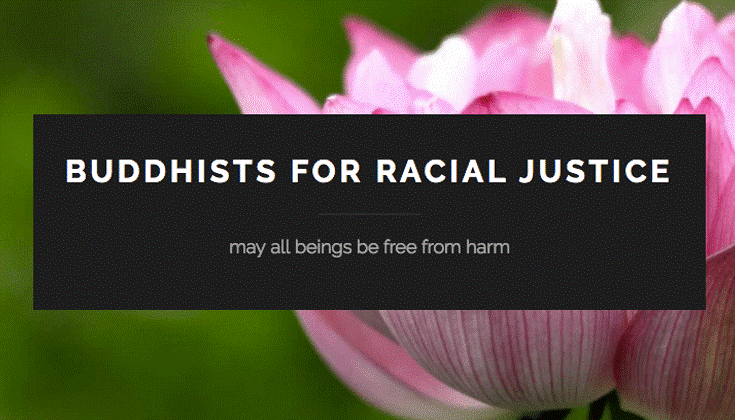
The promotion of a kind of psycho-therapeutic form of Neo-Buddhism among Whites could also be seen as an extension of the efforts of psychoanalysis and the Frankfurt School to treat putative cultural pathologies among Whites by addressing largely imagined repressions and anxieties.
It’s been claimed by The Tablet that Jews effectively created the modern “mindfulness” industry by stripping Buddhism of its mythological elements and radically increasing those elements of Buddhism that involve the cultivation of emotional passivity among adherents.
In fact, American “JewBu” Buddhism is notable for its encouragement of tolerance and pluralism, as well as the neglect of one’s own individual interests.
This runs counter to the facts of historical Asian Buddhism, which has seen authoritarian and war-like forms, and also to contemporary examples like the situation in Myanmar, where Buddhist monks have demonstrated their awareness of individual and group interests by leading violent attacks on Muslims and their property.
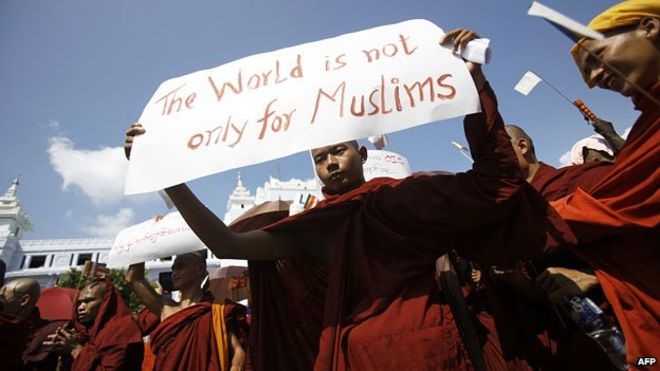
Literal Jewish Gurus
As “Buddhist” teachers and gurus, Jews can of course obtain very high levels of White convert obedience and commitment while obscuring the precise nature of their activities. Changes of name, common in conversions to Buddhism, further obscure links between the American “Buddhist” hierarchy, making Jewish ethnic nepotism, and Jewish dominance of the movement’s origins and leadership, less obvious. For example, a promotion by a Wu Kwang of a Surya Das will raise fewer eyebrows than a Joseph Goldstein promotion of a Joshua Goldberg.
The end result is that Jews have been able to very rapidly obtain a large number of priest-like spiritual roles over Whites without any of the awkward hurdles in Christianity. Unlike the historical situation in the Catholic Church, Jews have been able to saturate leadership roles in Buddhism very quickly, without suspicions, without demanding studies and examinations of theology, and without making religious declarations that run counter to Judaism.
Due to the decentralized nature of Buddhism and its reliance on a system of teaching “lineages” (spiritual authority is often passed down via “direct face-to-face Dharma transmission” between master and student) all Jews had to do was insert themselves into these lineages (under the right masters) at the right time (the “oy vey school” of the 1950s and 1960s) and they could direct the future of American Buddhism thereafter, both by establishing its infrastructure, by selecting its future co-ethnic gurus via “Dharma transmission” and by expelling dissenters from their anti-White activist agenda.
Thus we see many stories like that of contemporary “Zen Master” Zoketsu Norman Fischer, who describes himself as a “Dharma heir” in the lineage of Sojun Mel Weitsman.
The White Buddhist convert scene has also been a rather putrid soil for cult-like behaviors and sexual misconduct and abuse. Even before Jews swamped early Western Buddhism, huge numbers of the early Asian gurus were involved in the sexual grooming of their White followers (e.g. see here, here, here, and here).
Homosexuals have likewise used the White Buddhist convert scene for depraved purposes. Confirming a credo of mine that it’s never a good idea to permit non-Whites, gays, and Jews to possess any position of authority, one of the most recent scandals has involved “American Buddhist” Noah Levine. Levine is the son of Stephen Levine, a Jewish associate of Ram Dass (Jewish psychologist Richard Alpert), and part of the same coterie as Kornfield, Goldstein, and Salzberg. Noah Levine was taught “Buddhism” by Kornfield, and subsequently went on to found the Against the Stream Meditation Center in Venice, California, as a distinct “American Buddhist lineage.”
Against the Stream, which describes itself as having been founded “on antisexist and antiracist principles” became known for its use of punk imagery, and it has played a significant role in the promotion of “woke” culture within American Buddhism via its courses on Whiteness, White privilege, and racism.
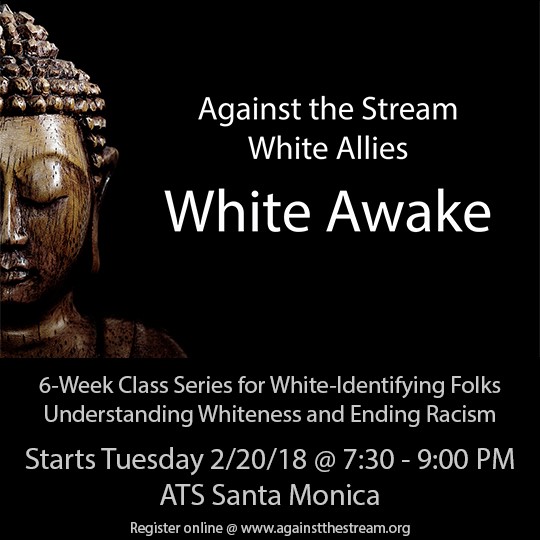
Unfortunately for Levine, and despite his anti-sexism classes, allegations emerged in late 2019 that Levine had been sexually assaulting female followers, prompting the organization to expel him. Other Buddhist organizations have distanced themselves from him and revoked his teaching certifications. Enraged, Levine let the cat out of the bag when he complained that his father and colleagues “Kornfield, Ram Dass, Joseph Goldstein, Sharon Salzberg” were essentially frauds anyway and that “these guys had no authorization to teach, they just gave it to themselves.” Or to put it another way, they simply invented their own religion based on the promotion of passivity and the celebration of diversity, and called it Buddhism.
Conclusion
As someone profoundly influenced by the philosophy of Arthur Schopenhauer, I have a natural sympathy for authentic Buddhism and its ancient teachings on suffering. It has also been remarked by many scholars that Zen Buddhism has very close parallels in the philosophies of both Nietzsche and Heidegger, with the result that there is definitely something in Buddhism that is accessible, and even useful, to the European mind and soul. That being said, the increasing drift of White Americans into Buddhism (see here, here, and here) should be viewed with alarm given the above discussion. American Buddhism is, to a very significant extent, an artificial contrivance of Jewish intellectuals designed to pacify Whites, promote multiculturalism, and otherwise advance political goals oppositional to White interests—literally the same goals of the activist Jewish community in America generally.
[1] Sigalow, American JewBu: Jews, Buddhists, and Religious Change, 1.
[2] Ibid., 159.
[3] Ibid.
[4] Ibid., 59.
[5] Ibid., 57.
[6] Ibid., 58.
[7] Ibid.
[8] Ibid., 76.
[9] G. Laderman, Religion and American Cultures: Tradition, Diversity, and Popular Expression: 2nd Edition (Santa Barbara: ABC-CLIO), 57.
[10] Sigalow, 76.
[11] Ibid., 78.
[12] Ibid., 69.
[13] Ibid.
[14] Ibid., 70-71.
[15] Ibid., 73 & 76.



No comments:
Post a Comment